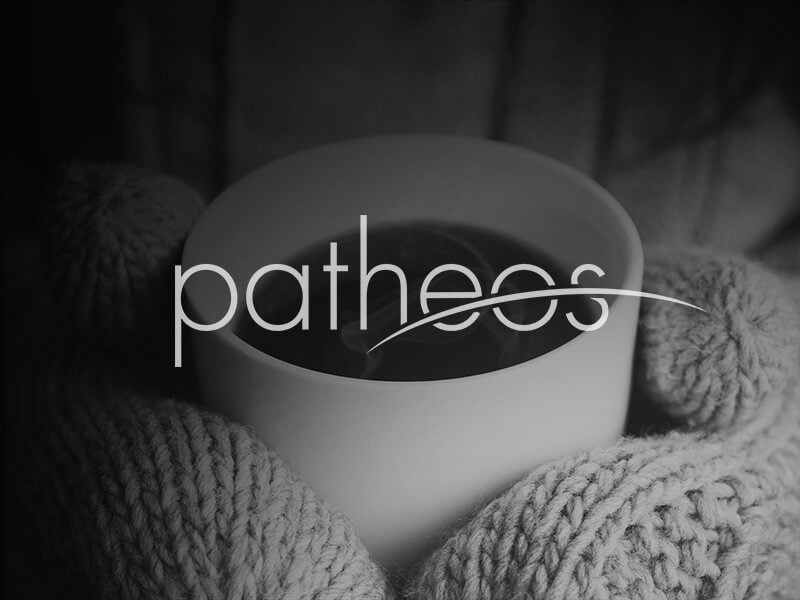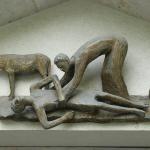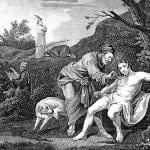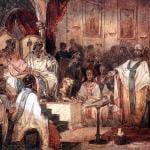Washington D.C., Oct 20, 2016 / 12:03 pm (CNA/EWTN News).- For decades, there's been concern in many corners of the Church that Catholic music is in crisis. The 1992 book “Why Catholics Can't Sing” outlined a history of modern Catholic Liturgical music and a rapid shift away from traditional chants and hymns in the later part of the 20th Century. Writer Damian Thompson decried “Bad Catholic Music,” such as folk-and-jazz-inspired “worship songs” in a 2015 essay in the British publication the Catholic Herald. Most recently, in a February column for Aleteia, Tommy Tighe raises concerns that some common Catholic hymns are not only musically lacking, but doctrinally questionable. Much of the critique of contemporary liturgical music lies in the reforms of the Second Vatican Council, and how they were carried out. Critics attest that when interpreting the changes of Vatican II, many dioceses and parishes cut out important parts of the Church’s liturgical heritage, displaced the rich history of chant with other forms of music, and substituted suggested sung prayers with hymns resembling popular performance songs. While this may certainly be the case in many places, other musical scholars affirm that it is actually the reforms of Vatican II that not only preserve the rich liturgical history the Roman Catholic Church has used for centuries, but allow that tradition to grow. While they may share many of the same critiques of some popular works and trends in certain kinds of liturgical music, they also say that Mass music is getting better – and that it is getting better because the Church has preserved what is good from centuries past and is also providing avenues for worthwhile contributions from other traditions and the modern day. Rather than detract from the Church’s musical heritage, the Church is now in a place to restore and add to it. “The abundance of music composed over the centuries and still apt for the liturgy is staggering,” Catholic University director of Sacred Music, Leo Nestor, told CNA. “It is a sign of the Holy Spirit's continuing inspiration to artists throughout human history.” In the tradition and with the help of guidelines laid down in the Second Vatican Council, the Church has all it needs for beautiful liturgical music. New music, scholars say, is an important part of this revival of musical traditions the Church has saved. “The Church admits all worthy art into Her liturgy and the Second Vatican Council makes that clear,” said Fr. Vincent Ferrer Bagan, OP, Choir Director for the Dominican House of Studies in Washington, D.C. “New compositions have always come into the Church.” But in order to see where liturgical music is going, it's important to understand where it came from.The roots of sacred music Music isn't just an important addition to the liturgy, added as an extension of praise and worship. For much of the Church’s history, music has been an essential part of the liturgy itself. The inclusion goes back to the very earliest days of the Church – to the Last Supper, Nestor said. “We know that Christ and his disciples sang a hymn at the Last Supper,” he told CNA. Singing quickly was “mandated” during many parts of early Church celebrations. Over the centuries, Catholic theology developed to explain why the union of sacred music and text was such an important element of worship that arose from these early traditions. The Roman Catholic Church also continued to intertwine music and prayer into nearly every part of its liturgy. Within the Roman Catholic Church, there are sung elements that change to reflect both daily prayers and readings and set elements of the liturgy that remains steady throughout the year, Nestor said. The parts that change daily are called the “Proper,” and the elements which remain the same are called “the Ordinary.” Yet, within recent decades, some of these elements are rarely heard because their use is highly suggested, but not mandatory. While the parts of the Mass Ordinary, such as the Kyrie, Sanctus or Agnus Dei, remain largely constant and cannot be omitted from the Liturgy except under specific circumstances, many parts of the proper have fallen from daily use. When these elements from the propers are dropped, parishes leave out important music that has special relevance to the prayers of the day. And these propers are “the words the Church wants us to hear sung today,” Nestor said. “The specificity and messages of these texts and their accompanying psalms is mirrored in every other proper text of the liturgy.” While many parishes neglected the propers after the reforms of Vatican II, many churches are starting to bring them back into popular use. “In our day, the propers, specifically the Entrance and Communion Antiphons, are making a very strong return, not only in the major churches, but in many parishes.”Evolving Traditions While the Church proscribes that some parts of the liturgy should be sung when possible, how a congregation places these parts to music can vary by a parish's cultural and its own liturgical traditions. “The Church in her rites accommodates the languages and select elements specific to individual cultures, a custom extending back to the early Church,” Nestor said. The practice of incorporating appropriate cultural elements into the liturgy, also called “inculturation,” is “a two-way street,” he said. In the process, authentic cultural values and traditions are integrated into Christianity and Christianity impacts culture. Authentic accommodation of culture and tradition must respect the essential unity of the liturgy, and the balance between culture and liturgy must be done carefully Nestor cautioned. When this respect for both liturgy and culture takes root, however, it “can be a manifestation of the Church's universality.” Nestor recalled the example of a friend who was active both at the Basilica of the National Shrine of the Immaculate Conception and at a local African-American parish, St. Augustine's Church, in Washington D.C. Her advice, he said, encapsulated the Church's guidance on the integration and respect for various cultural traditions. “In her maternal wisdom, she said, 'I want my son to be comfortable at St. Augustine's, here at the Shrine, at Notre Dame in Paris and at St. Peter's in Rome,'” Nestor relayed. This attitude, he said, strikes at the heart of the universality of the Church. Various cultures and peoples are no the only ones with their distinct traditions within the Church; many religious orders also have their own liturgical and musical traditions. Fr. Bagan directs the choir at the Dominican House of Studies in Washington, D.C., where student brothers prepare for religious vocations with the Dominican order. He told CNA that in the brothers' latest musical album seeks to illuminate the unique musical tradition of their religious order. When the Dominican order was founded and its liturgy formed, there was no standard liturgy for the whole Church, Fr. Bagan explained. When the order organized its own liturgy, the Dominicans began their own independent liturgical tradition that is “slightly different” from the Mass and liturgy prayed in the rest of the Roman Catholic Church. From this quirk of liturgical history, Dominican chant also evolved into its own distinct tradition. Like the relationship between the Roman rite and the Dominican rite of the liturgy, the Dominican chants for Mass parts and prayers are only “slightly different” from other chants used within the Roman Catholic Church, like Gregorian chant, even though they developed separately. While the Dominicans now use of the Roman Rite for the ordinary celebration of the Mass and Liturgy of the Hours after the Second Vatican Council, the order still maintains the right to celebrate its own rite and incorporate elements of its own tradition – such as some of its unique chants and propers – into its celebrations. “The Church, I think, was happy to say, 'Yes, Dominicans, you have these traditions and they are beautiful. Yes, let’s keep them alive,'” Fr. Bagan said. The brothers' projects, like its album, are opportunities for the Dominicans to share both the richness of the tradition as well as the message of the Gospel with others, said Fr. Bagan. “In the end, we’re really happy to be able to do this because it’s very important to get all of these treasures from the Church’s musical tradition into people’s hands.”Moving Music Forward While eight hundred years old, the Dominican musical tradition is still an evolving one. This fact is an element which the student brothers recording tried to bring forward through new compositions on the album, Fr. Bagan said. Among the older works are new pieces written by brothers, which range in style. Among the new works are more traditional hymn-like settings as well as pieces that include “wilder” harmonies and musical tension and other elements from 20th century music. In his view, Fr. Bagan says that modern liturgical pieces, such as the ones the brothers sing, “take what’s best in the music in our own time and what can be made fitting for the Temple of God and Divine Worship.” “Generally of course, music for Church needs to be a bit more stylistically timeless than music for the secular sphere,” he stipulated, “not to say that good things can’t be brought in.” In addition, he clarified, music intended for the liturgy should remain focused on its purpose and role. “They can be challenging of course, but should never be jarring or distract from the meaning of the divine text or from the purpose of worship for which music is made.” Chris Mueller, a contemporary Catholic composer, also seeks to incorporate modern musical elements into appropriate liturgical settings. Mueller, who has a background in jazz music, has written numerous liturgical pieces, including his “Missa pro editione tertia,” a setting of the 2011 English translation of the Mass, which has been used by parishes around the world. In writing his Mass for the 2011 translation, his goal was to create a piece that was singable and was clearly liturgical, and yet was in conversation with he current state of the musical world. “I was trying to write in a way that was modern and contemporary, but also liturgically appropriate,” Mueller reflected. While he's “not trying to write music that sounds like Mozart or Bach, I'm trying to write music that sounds modern,” he also doesn't want his music to sound just like secular jazz or modern music played in concert halls or jazz clubs. Finding the “balance” between modern elements and liturgical music, Mueller said, is “an interesting challenge.” The key in writing the “Missa pro editione tertia” and other liturgical pieces has been using modern elements and tones as “part of my palette of approaches,” he commented. For Mueller, drawing on jazz music for inspiration means using “surprising” turns and harmonies that don’t “really sound like anything else” It’s important, Mueller said, for Mass music to sound different from other kinds of music we may hear. “What happens at the Mass when God becomes present at the altar is not something that happens in any part of the rest of your life. The truth of what’s happening at Mass is so different than everything else that the music needs to be reflect that somehow.” For Mueller, creating these works is ultimately about giving his gifts back to God. “In Vatican II it says that sacred music is the most valuable treasure of all the artistic treasures the Church has, then if I can be a small part of that, then what better use of my skills could there be?” But as Church music moves forward in the third millennium, how does all of this translate for the average parish? For Thomas Stehle, how to choose good liturgical music is not only a theoretical issue but a practical one. As director of music for St. Matthew’s Cathedral in Washington D.C, Stehle is in charge of planning liturgies for six English and Latin-language Masses for a diverse community within the Archdiocese. For him, Stehle told CNA, the challenge – as it would be at any parish – is balancing music that is both of quality and liturgically appropriate as well as easily accessible for prayer. He said there's a “legitimate question” not only about a given piece’s quality but also its style. Not every pleasant piece is appropriate for Mass, he cautioned, and this guideline cuts across genres of music. On the other hand, he noted, many pieces that are not considered “high art” are worthy of being sung at Mass. “Does it get beyond, 'oh I love this' to 'I can pray with this?'” Steel said. The approach he's settled on when searching for music is to look for “really legitimate things that come from people's culture, but do it very carefully and as high-quality as possible, within the style,” he said. Stehle also added that music directors should consider both the liturgical season and the Church’s daily readings, propers and prayers in order to create the “highest degree” of unity between liturgy, prayer and music. “It’s important when we’re asking people to embody that prayer in song that it’s coming from very informed choices.” “(T)hat is the goal; that what you put in people’s mouths is worthy, is appropriate, is liturgically appropriate, is pastorally appropriate and is musically appropriate.” This article was originally published March 4, 2016. Read more
















